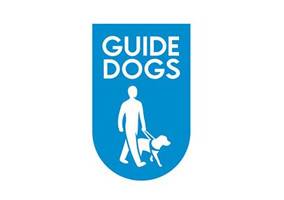CLIC Sargent: Reaching generation Z
Michael Wilkinson, head of digital change at CLIC Sargent, explained that the children’s cancer charity was rethinking how it operates to make it easier for young people to access its services.
He said the processes it had been using were “of another era” - for example sending cheques to young people - meaning it was hard for its service users to relate to them. It has now switched to a new online system to make grants to young people.
However Wilkinson said that service users “expect a whole lot more” now, because of changes in how people communicate.
Wilkinson said CLIC Sargent has changed its tone on social media; a channel which had previously been focused on asking for money. He said that, because of this, young people had been unable to find anything relevant to them when they looked at the charity's social media.
The charity has now created Facebook groups for young people and their families to share experiences. It is also looking at ways it can build a platform to help young people “put their own content out”.
CLIC Sargent has also improved its website to make it easier to donate, or sign up to volunteer online, and Wilkinson said the charity has seen a 38 per cent donation uplift as a result.
“Generation Z don’t want to be talked at,” Wilkinson said. “They want want to feel ownership over it”.
Shelter: Linking up media activity and digital fundraising
Stephanie Borne, head of digital fundraising, and Kimberly Carter, media manager at Shelter, explained how good storytelling can increase online donations.
Their session focused on how, using footage captured on camcorders by homeless people last Christmas, Shelter had been able to attract national media attention, which led in turn to an increase in donations.
Borne and Carter said that using user generated content to tell authentic human stories, as opposed to producing something more "slick" in-house, made these stories more attractive to broadcasters and helped the charity secure prime-time coverage on Channel 4 News.
“Shelter isn’t the hero; it is more like Gandalf,” Carter said.
Borne added that having the chief executive appear on television also led to a spike in online donations, “just by having her out there”.
Shelter used this saturation of media coverage to then increase its use of Facebook ads “because a lot of people are commenting as they watch,” she said.
Borne also said that there was no need to worry too much about whether the digital ads match the editorial too closely, as long as something was appearing in people’s feeds prompting them to donate.
RSPB: Using drones to transform conservation
At the beginning of the day Thomas Starnes, geographic information systems analyst at RSPB, told delegates how the charity was using drones to map conservation areas more quickly and efficiently.
He said they are “really easy to get out of the box and start flying” and that volunteers are involved in flying drones, but it's important to be aware of changing safety rules and regulations.
By using drones to take pictures, Starnes said the RSPB is able to get accurate images of what is happening more quickly than before, making it easier to monitor how landscapes are changing.
RSPB uses photogrammetry techniques to “take pictures and stitch them together” to create “3D models” of areas.
“What excites me is not so much that it looks whizzy, but how much information is in here about that forest,” Starnes said.
Related articles











